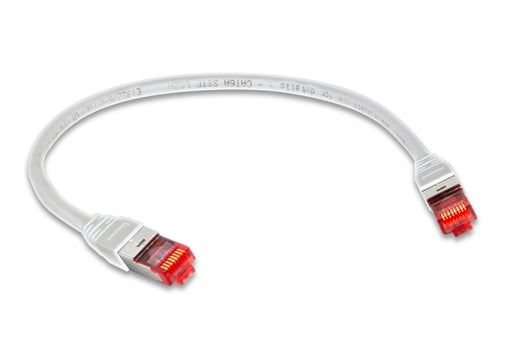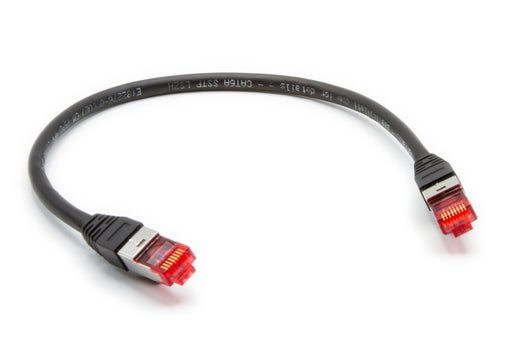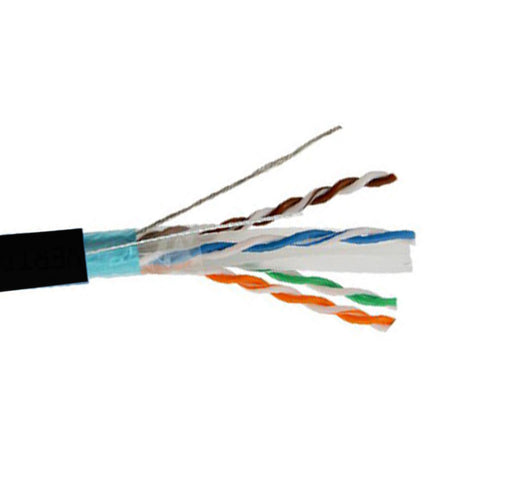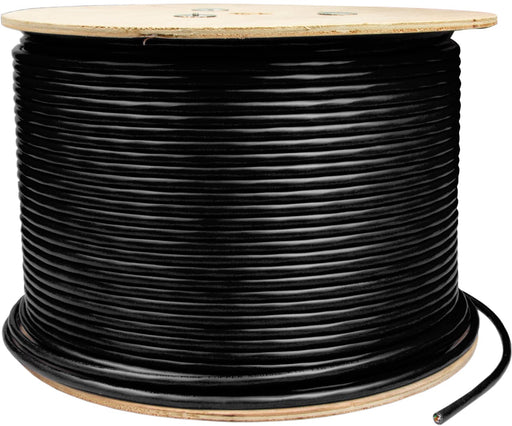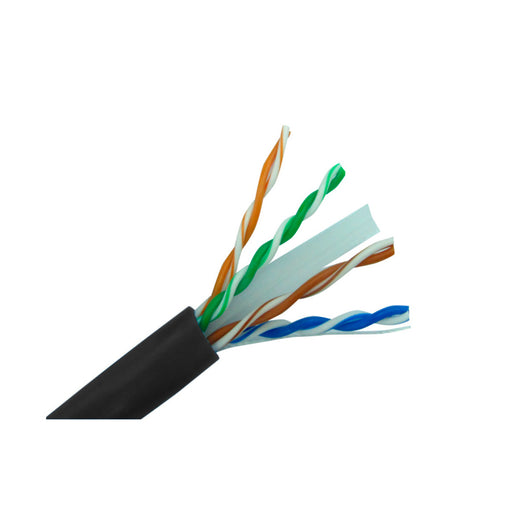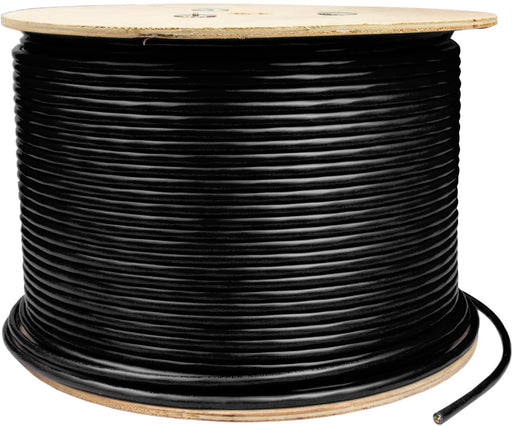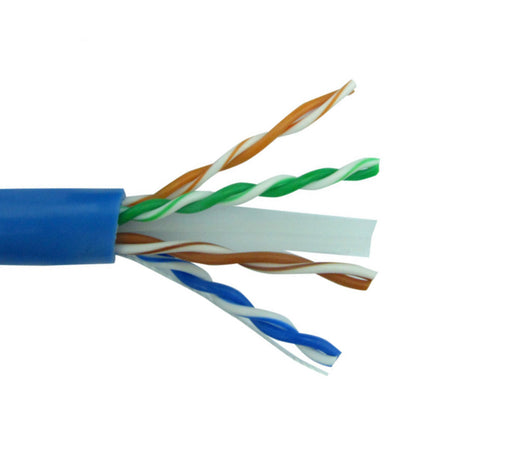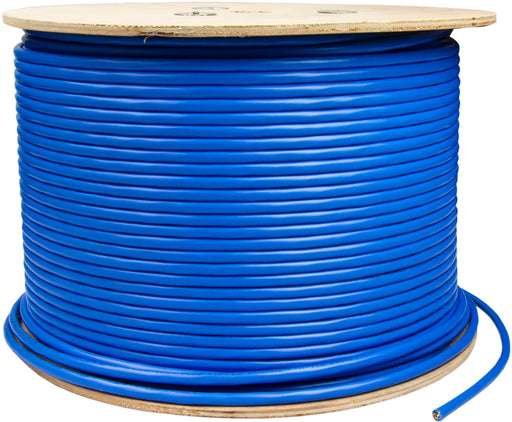Know More About Triplett Cat6a Shielded Cable
What is Cat6a Shielded Cable?
CAT6A shielded cable is a type of Ethernet cable that has been specifically designed to handle the high-speed data transmission required for 10 Gigabit Ethernet. The shielding on Cat6A cable helps to protect against electromagnetic interference (EMI) and radio frequency interference (RFI), which can cause signal degradation and data loss.
CAT6A shielded cable is also thicker and heavier than standard CAT6 cable, so it can handle the increased bandwidth and heavier traffic loads without overheating. CAT6A shielded ethernet cable is typically used in industrial and commercial settings, where there is a high level of electromagnetic interference.
What is the Purpose of Shielded CAT6 Cable?
Shielded CAT6 cable is used to protect data from electromagnetic interference (EMI). In environments with a lot of electronic equipment, such as data centers, shielded CAT6 cable is required to prevent the degradation of signals. The shielding on the cable deflects EMI, which can cause corruption of data.
What is the Difference between CAT6 and CAT6A Cable?
Category 6 cable, commonly referred to as CAT6, is a type of Ethernet cable that is designed to support data transfer rates of up to 10 Gbps. Category 6A cable, or CAT6A, is a newer type of Ethernet cable that is designed to support data transfer rates of up to 10 Gbps as well as improved transmission performance for frequencies up to 500 MHz. CAT6, is a type of twisted pair cable that is used for telecommunications. It has been superseded by the Category 6A cable, which is an enhanced version of CAT6. Category 6A cable offers twice the bandwidth of CAT6, and can support speeds of up to 10 Gbit/s.
There are a few key differences between CAT6 and CAT6A cables.
- They have a higher bandwidth than CAT6 cables, meaning they can transmit more data at a time. This makes them perfect for businesses that use a lot of data-intensive applications, such as VoIP or video conferencing.
- CAT6A ethernet cables are better equipped to handle electromagnetic interference (EMI), which can cause disruptions in signal transmission than CAT6 cables.
- CAT 6A cables are more durable and can better withstand physical stress.
- Another difference is that CAT6A cable is thicker, making it less susceptible to damage.
- CAT6A cable connectors has more shielding than CAT6, which helps to reduce interference and improve signal quality. This can be important in noisy environments, like factories or airports.
- CAT 6A cables are able to handle more power than CAT6, making them better suited for use in high-power applications.
- CAT6A cables are shielded, which helps to protect them from interference and electromagnetic radiation.
What is the Difference between CAT6A Shielded and Unshielded?
Unshielded CAT6A cables are one of the advanced categories of Ethernet cables. They offer many benefits over other types of cables, such as increased bandwidth and performance. One of the primary advantages of unshielded CAT6A cables is their ability to support 10 Gigabit Ethernet. This means that they can handle more data at a higher speed than other types of cables. This makes them perfect for applications that require fast and reliable network performance, such as video streaming and online gaming. Unshielded CAT6A cables are perfect for businesses that need high-speed internet and want to future-proof their network.
Shielded CAT6A cables are becoming increasingly popular in the world of data communications. This is due to the ever-growing demand for bandwidth, and the need to keep that bandwidth as free from interference as possible. In a world where everything from cordless phones to baby monitors can interfere with your network, a shielded CAT6A cable can be a life-saver. Cat 6A shielded ethernet cable offers more protection against electromagnetic interference (EMI) and radio frequency interference (RFI). They are often used in noisy environments, such as factories or data centers, to prevent electrical noise from disrupting or interfering with the signal.
There are several key differences between shielded CAT6A cables and unshielded CAT6A cables. A few amongst them are:
- Shielded CAT6A cable provides greater protection against electromagnetic interference (EMI). Unshielded cables are more susceptible to EMI, which can cause signal degradation and data loss. This can cause problems with data transmission and can lead to corrupted data. Overall, shielded CAT6A cables are typically used in applications where noise immunity and EMI protection are required. Unshielded CAT6A cables are typically used in applications where EMI protection is not required.
- Shielded CAT6A cables also have a better shielding effectiveness than unshielded cables, meaning they are better able to protect the signal from external sources of noise. This can be especially important in environments where there is a lot of electrical interference, such as data centers or industrial facilities.
- The other main difference is that shielded CAT6A cables are thicker and more difficult to install. This is because the shielding material takes up more space than the insulation around the wires in unshielded cables. However, the extra protection offered by shielding can be well worth the extra hassle during installation.
Browse More Security, CCTV & Cabling Equipment Collections
Camera Install & Maintenance:
| Security Camera Testers | HD LED Test Monitors | Baluns, Converters & Hubs |
| CCTV HDMI & IP Extenders | HDMI Cables |
CCTV Connectors:
| BNC Adapters | BNC Connectors | F Connectors |
| Compression Connectors | RJ45 (CAT5-6)Connectors | Cabling Hand Tools & Kits |
| CCTV Coax Connectors | Modular Connector | Between Series |

